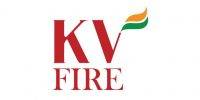 Search and rescue (SAR) operations in disaster zones are complex and demanding endeavors that require specialized techniques and skills to locate and extract survivors efficiently. The challenges posed by various types of disasters, such as earthquakes, hurricanes, or industrial accidents, necessitate advanced approaches for responders to navigate hazardous environments, overcome obstacles, and save lives. This article explores cutting-edge techniques used in modern search and rescue operations, highlighting how technology, training, and collaboration contribute to more effective and successful outcomes.
Search and rescue (SAR) operations in disaster zones are complex and demanding endeavors that require specialized techniques and skills to locate and extract survivors efficiently. The challenges posed by various types of disasters, such as earthquakes, hurricanes, or industrial accidents, necessitate advanced approaches for responders to navigate hazardous environments, overcome obstacles, and save lives. This article explores cutting-edge techniques used in modern search and rescue operations, highlighting how technology, training, and collaboration contribute to more effective and successful outcomes.
Drones and Aerial Reconnaissance
Drones have revolutionized search and rescue operations by providing invaluable aerial views of disaster-stricken areas. Equipped with advanced imaging technology, drones can quickly cover large areas, identify survivors, and assess the extent of damage. Thermal imaging cameras mounted on drones enable responders to detect body heat signatures even in low-visibility conditions, facilitating the location of trapped individuals.
K-9 Search Teams
Trained canine search and rescue teams are essential for locating survivors in disaster zones. Dogs have an exceptional sense of smell that can detect human scent even under rubble. These teams work tirelessly alongside human responders, covering challenging terrain and identifying areas where survivors might be trapped. K-9 teams play a vital role in narrowing down search areas and expediting rescue efforts.
Advanced Communication and Tracking
Communication and tracking technologies have greatly improved the coordination of search and rescue operations. Responders equipped with GPS devices and two-way radios can maintain real-time communication, enhancing situational awareness and enabling efficient resource allocation. This technology is particularly crucial in scenarios where responders are spread across a wide area.
Tunnel and Confined Space Rescues
Disasters like building collapses can lead to individuals being trapped in confined spaces or underground tunnels. Specialized techniques and equipment, such as fiber-optic cameras and listening devices, enable responders to navigate tight spaces and assess the condition of survivors. Technical training equips responders with the skills needed to extract individuals safely from these challenging environments.
Urban Search and Rescue (USAR) Teams
USAR teams are highly trained units that specialize in locating and extracting survivors from collapsed structures. Equipped with specialized tools like hydraulic jacks and concrete-cutting equipment, these teams work meticulously to access victims while ensuring their safety. USAR teams often collaborate with engineering experts to assess structural stability during rescue operations.
Satellite Imagery and GIS Mapping
Advanced satellite imagery and geographic information systems (GIS) technology play a crucial role in disaster response. Satellite images provide real-time data on the disaster’s impact, helping responders prioritize areas for search and rescue efforts. GIS mapping aids in creating detailed visualizations of disaster zones, resource distribution, and access routes, facilitating more informed decision-making.
Underwater Search and Rescue
In scenarios involving flooding, hurricanes, or maritime accidents, underwater search and rescue becomes a critical component. Specialized diving teams equipped with underwater sonar systems can locate submerged victims, vehicles, and debris. Remotely operated underwater vehicles (ROVs) also contribute to underwater searches by exploring hazardous or inaccessible areas.
Psychological First Aid and Trauma Management
Search and rescue operations often involve encounters with survivors who have experienced trauma. Responders are trained in psychological first aid to provide emotional support and stabilize survivors’ mental well-being. This approach helps survivors cope with the distressing experience and prepares them for the next steps in their recovery journey.


















































